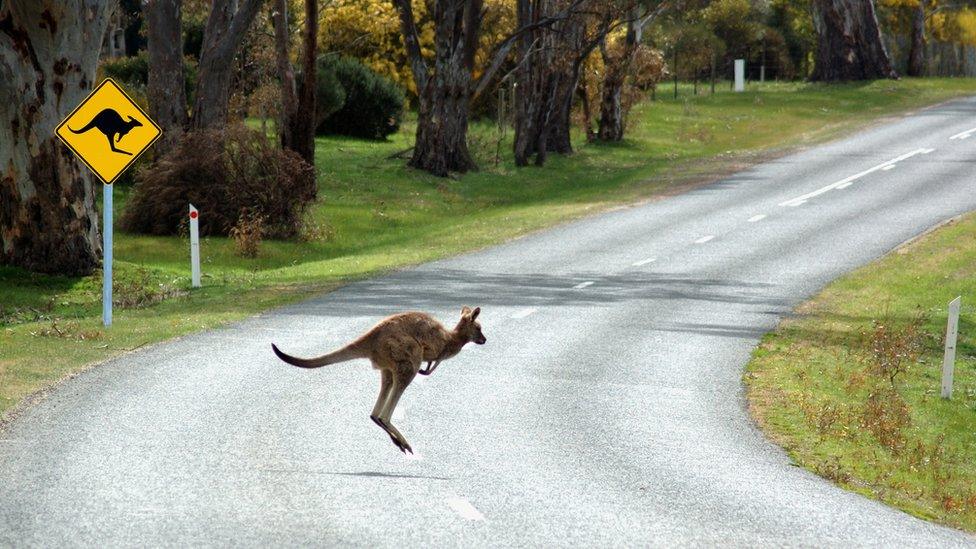Volvo's driverless cars 'confused' by kangaroos
- Published

There are more than 20,000 kangaroo strikes each year in Australia
Volvo's self-driving technology is struggling to identify kangaroos in the road.
The Swedish car-maker's 2017 S90 and XC90 models use its Large Animal Detection system to monitor the road for deer, elk and caribou.
But the way kangaroos move confuses it.
"We've noticed with the kangaroo being in mid-flight when it's in the air, it actually looks like it's further away, then it lands and it looks closer," its .
But the problem would not delay the rollout of driverless cars in the country, David Pickett added.
Volvo has been testing kangaroo detecting systems since 2015
According to the Australia's National Roads and Motorists' Association, 80% of animal collisions in the country involve kangaroos.
More than 16,000 kangaroo strikes each year created millions of dollars of insurance claims, it said.
Volvo's safety engineers began filming kangaroos' roadside behaviour in a nationally recognised hotspot for collisions in 2015.
And the data is being used to create a system of radar and cameras that can detect kangaroos and apply the brakes if a collision is imminent.
Volvo has an ambitious target that no-one is killed or seriously injured in a new Volvo by 2020.